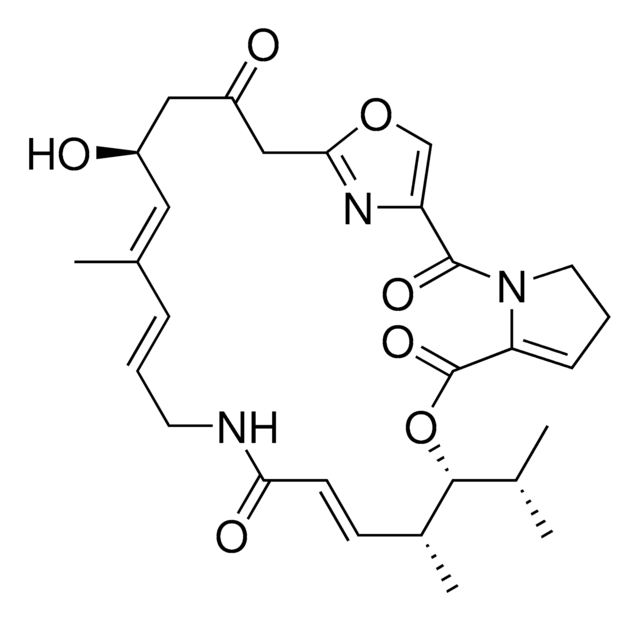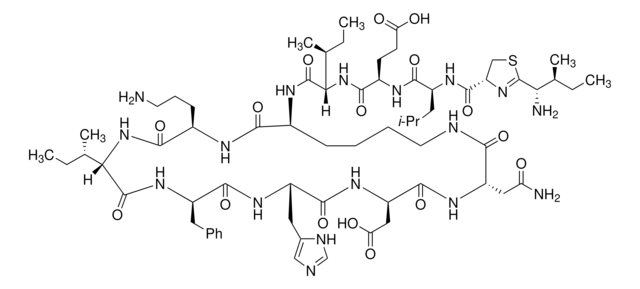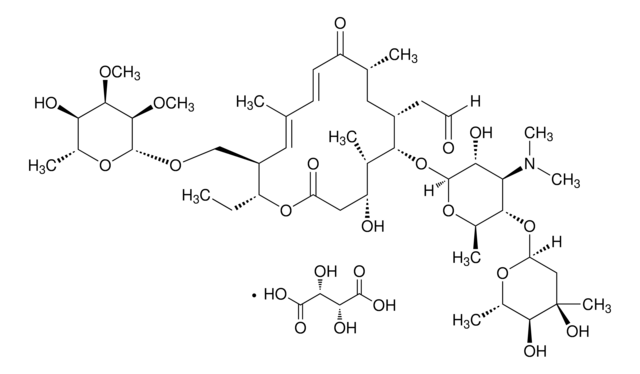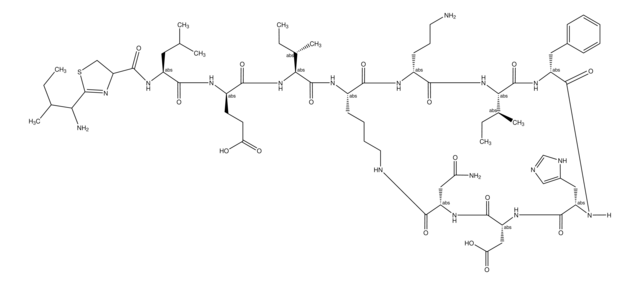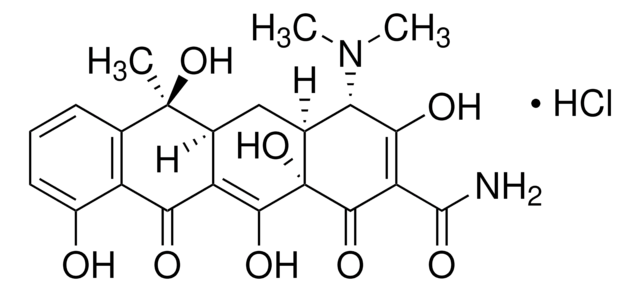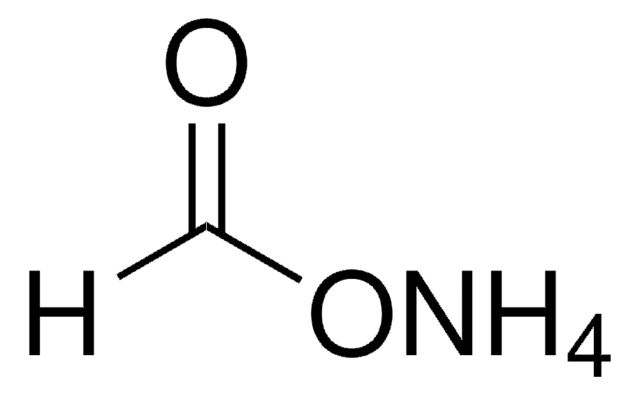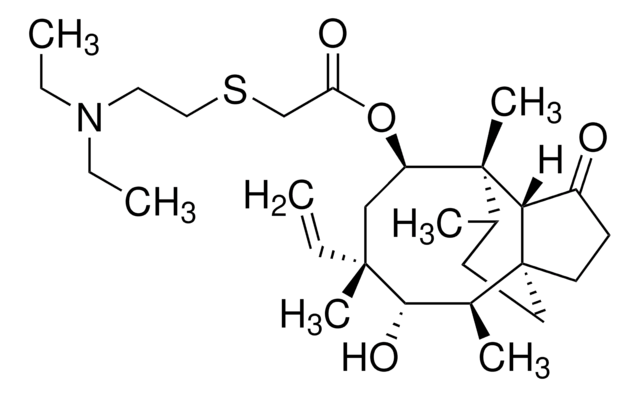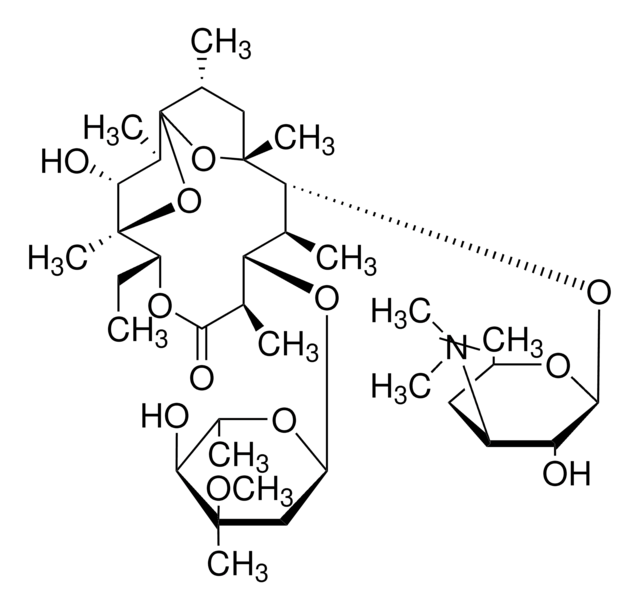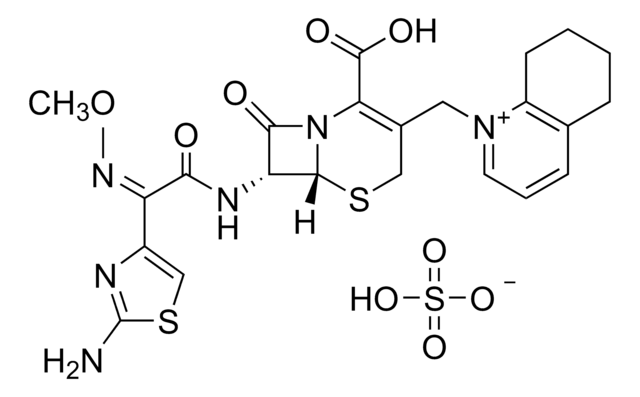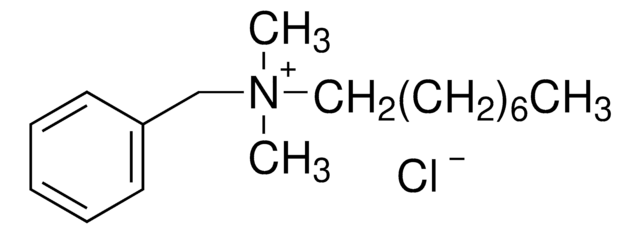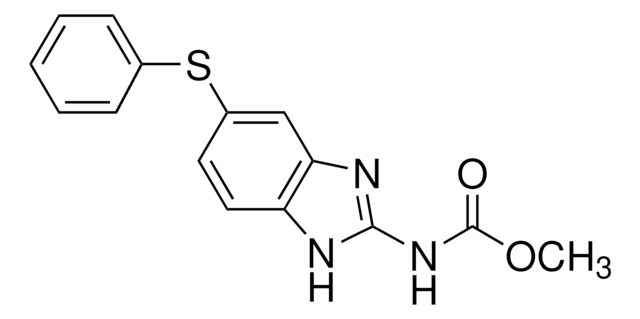Kluczowe dokumenty
V4140
Virginiamycin S1
≥99% (HPLC)
Synonim(y):
dihydro virginiamycin S1, Antibiotic 899, Staphylomycin S
About This Item
Polecane produkty
pochodzenie biologiczne
Streptomyces virginiae
Poziom jakości
Próba
≥99% (HPLC)
Postać
solid
warunki przechowywania
(Keep container tightly closed in a dry and well-ventilated place.)
kolor
white
spektrum działania antybiotyku
Gram-positive bacteria
Tryb działania
protein synthesis | interferes
temp. przechowywania
−20°C
ciąg SMILES
CC[C@H]1NC(=O)[C@@H](NC(=O)c2ncccc2O)[C@@H](C)OC(=O)[C@@H](NC(=O)[C@@H]3CC(=O)CCN3C(=O)[C@H](Cc4ccccc4)N(C)C(=O)[C@@H]5CCCN5C1=O)c6ccccc6
InChI
1S/C43H49N7O10/c1-4-29-40(56)49-21-12-17-30(49)41(57)48(3)32(23-26-13-7-5-8-14-26)42(58)50-22-19-28(51)24-31(50)37(53)47-35(27-15-9-6-10-16-27)43(59)60-25(2)34(38(54)45-29)46-39(55)36-33(52)18-11-20-44-36/h5-11,13-16,18,20,25,29-32,34-35,52H,4,12,17,19,21-24H2,1-3H3,(H,45,54)(H,46,55)(H,47,53)/t25-,29-,30+,31+,32+,34+,35+/m1/s1
Klucz InChI
FEPMHVLSLDOMQC-IYPFLVAKSA-N
Opis ogólny
Zastosowanie
Działania biochem./fizjol.
Uwaga dotycząca przygotowania
Inne uwagi
Kod klasy składowania
11 - Combustible Solids
Klasa zagrożenia wodnego (WGK)
WGK 3
Temperatura zapłonu (°F)
Not applicable
Temperatura zapłonu (°C)
Not applicable
Certyfikaty analizy (CoA)
Poszukaj Certyfikaty analizy (CoA), wpisując numer partii/serii produktów. Numery serii i partii można znaleźć na etykiecie produktu po słowach „seria” lub „partia”.
Masz już ten produkt?
Dokumenty związane z niedawno zakupionymi produktami zostały zamieszczone w Bibliotece dokumentów.
Klienci oglądali również te produkty
Nasz zespół naukowców ma doświadczenie we wszystkich obszarach badań, w tym w naukach przyrodniczych, materiałoznawstwie, syntezie chemicznej, chromatografii, analityce i wielu innych dziedzinach.
Skontaktuj się z zespołem ds. pomocy technicznej